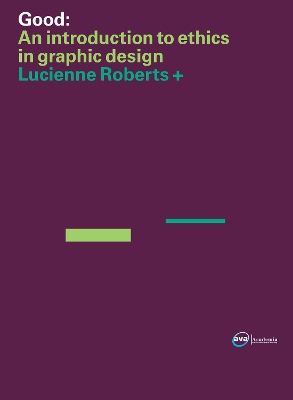Required Reading Range
5 total works
Drip-dry Shirts: The Evolution of the Graphic Designer
by Lucienne Roberts
Published 28 November 2005
Before the Second World War, the term graphic design didn't even exist. Lucienne Roberts' Drip-dry Shirts: The Evolution of the Graphic Designer celebrates the work of those practitioners who created this now familiar term.
Including work from and interviews with some of graphic design's biggest names - Ken Garland, Wim Crouwel, Milton Glaser, Karl Gerstner, Rosmarie Tissi and Ivan Chermayeff - this book gives an understanding of design history and sets contemporary work in an expansive and broad landscape. Contributors place their work in historical and personal contexts, reflecting on their formative years and long careers.
Rich in anecdotes and observations, as influential designers speak honestly about what it was like to make design history, this is detailed visual retelling of the history of graphic design and its pioneers.
Including work from and interviews with some of graphic design's biggest names - Ken Garland, Wim Crouwel, Milton Glaser, Karl Gerstner, Rosmarie Tissi and Ivan Chermayeff - this book gives an understanding of design history and sets contemporary work in an expansive and broad landscape. Contributors place their work in historical and personal contexts, reflecting on their formative years and long careers.
Rich in anecdotes and observations, as influential designers speak honestly about what it was like to make design history, this is detailed visual retelling of the history of graphic design and its pioneers.
Before the Second World War the term graphic design didn't even exist. "Drip-dry Shirts: The Evolution of the Graphic Designer" celebrates the work of those pioneers who created this now familiar term. It contains the work of some of the most established and most innovative designers. A series of highly illustrated interviews with designers such as Ken Garland, Wim Crouwel, Milton Glaser, Karl Gerstner and Rosmarie Tissi place their work in historical and personal contexts as each designer reflects on their formative years and long careers. This is a book rich in anecdotes and observations as, free of many of the insecurities of youth, these designers speak honestly about what it was like to make design history.
Consider this simple conundrum: is it possible to be a bad good designer or a good bad designer for that matter? If the answer is yes then which is preferable and what does this reveal about the relationship between ethics and design practice? Good: An Introduction to Ethics in Graphic Design seeks to answer these questions.
Graphic design is in ethical flux. Good comes at a time of growing disenchantment with style-led design solutions and the pursuit of self-expression alone and yet vacuous design judgements are still made without any real analysis of the criteria used. The terms good and bad are repeatedly applied without qualification whilst the relationship between personal and professional ethics is far too contentious to do any more than give cursory consideration. Despite recent manifestos and themed publications on design for good graphic designers have yet to examine what such terms really mean: in a time of relativism it has been far too divisive to do so.
Good takes philosophy as its starting point but is not a philosophy book. It seeks to marry abstract ideas with practical application, removing some of the mystique that surrounds philosophy and highlighting its relevance for us all. Designers are people. This book seeks to engage designers in a debate about their profession and in an analysis of their value and worth. The decisions we make define us, in our ethical choices we reveal who we are.
Graphic design is in ethical flux. Good comes at a time of growing disenchantment with style-led design solutions and the pursuit of self-expression alone and yet vacuous design judgements are still made without any real analysis of the criteria used. The terms good and bad are repeatedly applied without qualification whilst the relationship between personal and professional ethics is far too contentious to do any more than give cursory consideration. Despite recent manifestos and themed publications on design for good graphic designers have yet to examine what such terms really mean: in a time of relativism it has been far too divisive to do so.
Good takes philosophy as its starting point but is not a philosophy book. It seeks to marry abstract ideas with practical application, removing some of the mystique that surrounds philosophy and highlighting its relevance for us all. Designers are people. This book seeks to engage designers in a debate about their profession and in an analysis of their value and worth. The decisions we make define us, in our ethical choices we reveal who we are.
"Visual Communication" places graphic design in a wider cultural context, highlighting the key debates and issues the practice implies. Theoretical essays discussed by today's leading designers apply the cultural theory to the real world practice of graphic design, helping students to develop sound critical judgement and informed strategies for the generation of new ideas that accurately reflect the current zeitgeist. All arts graduates are required to study cultural theory as 20 per cent of their degree courses, the study of which culminates in a written dissertation. This title is a companion study guide to this cultural theory teaching from a commercial arts perspective. The book has been edited to fit broadly into the diverse curriculae of art schools and colleges around the world and is tailored for course adoptions.




